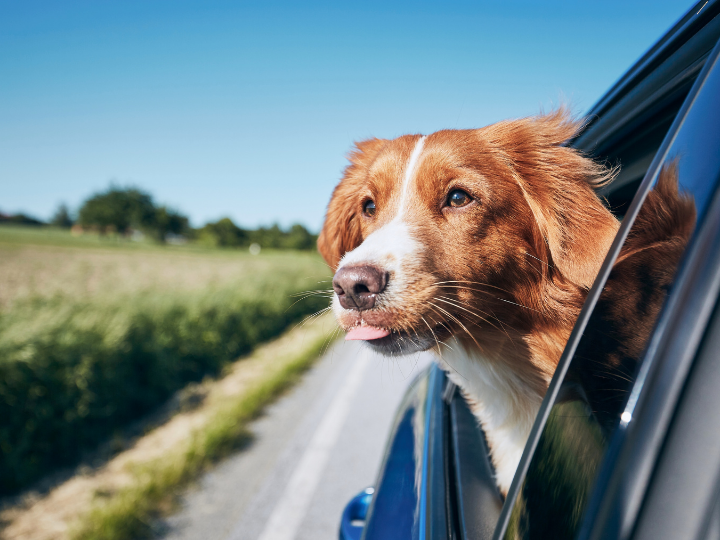The back-to-school season is exciting for kids – new classes, friends, and favourite teachers await. It also means taking road safety even more seriously to protect kids as they head to and from school daily. With more school kids walking, biking, or taking the bus, you have a key role in promoting vigilance and imparting a road safety culture.
So, how can you prepare your kids to safely walk, bike, or take the bus safely to and from school?
The Importance of Back-To-School Road Safety
Every year, Canada witnesses a concerning number of road incidents involving children. Around 30 child pedestrians lose their lives and 2,400 child pedestrians sustain injuries.
Many of these unfortunate events stem from a failure to adhere to safety protocols, a responsibility shared by both drivers and children. These staggering numbers highlight the importance of back-to-school road safety to protect this vulnerable group.
Understanding the Risks
Kids are exposed to a variety of risks when they are walking or biking to school. The most common risks include:
Inherent distractions
Children are easily distracted by talking to friends or family or electronic devices. The more distracted they are, the less aware they are of traffic and potential dangers.
Lack of full road awareness
Children have lower road awareness and may be unaware of the dangers of traffic or be unable to judge the speed and distance of approaching cars. They can easily make incorrect decisions, putting them at risk of accidents.
Impulsive behaviour
Kids are more impulsive than adults. They could spontaneously dart into streets to cross or chase after something without checking for approaching cars or other hazards. This impulsiveness can make it harder for drivers to predict the kids’ actions, putting them at a greater risk.
Inexperience on the road
Many kids have minimal experience navigating traffic situations, especially complex ones, such as busy intersections and narrow streets with parked cars. Without proper practice or guidance, they are more likely to make mistakes when judging the safety of the road.
Fortunately, Aviva Canada and Parachute introduced the Elementary Road Safety Program to educate and protect kids. However, there’s still more to be done by guardians and drivers.
The Drivers’ Role on Back to School Safety
Adults behind the wheel need to take extra care as well. They play a key role in preventing accidents and creating a safe environment for young pedestrians and bicyclists.
As a driver, your responsibilities include:
- Slow down in school zones and neighbourhoods where children may be present. Observe the 30-40km/h speed limit allowing faster reaction if a child darts out.
- Eliminate distractions like cell phones and exercise heightened focus on the road.
- Watch for school buses with lights flashing, and give them adequate space to protect children getting on and off.
- Be patient and considerate as children cross at intersections, crosswalks, and other designated drop-off or pick-up points.
- Observe all traffic signs, lights, and laws, including yielding to pedestrians at crosswalks and not passing stationary school buses with red flashing lights and an extended stop sign.
- Park carefully and don’t block roads and sidewalks near schools to ensure other motorists can easily spot students.
Preparing Your Kids to Walk to School
A recent Health and Behavior in School-Aged Children study reports that 22% of school kids walk to school. Over 50% of them live more than five minutes away from the school, meaning they must walk a considerable distance exposed to traffic and other elements daily to get there and back.
To prepare them to walk to school and from school,
- Talk about road safety, including potential traffic hazards, walking on sidewalks, following pedestrian signs, crossing at crosswalks, stranger danger, heightened focus on the road, and asking for help from crossing guards.
- Practice safe crossing by stopping at every curb, looking left-right-left for traffic, and making eye contact with approaching drivers before proceeding.
- Avoid jaywalking or assuming cars will see them and stop in time.
- Make them visible by wearing bright-colored clothing or reflective gear. Add reflectors or lights to their backpack and too.
- Trust your gut. If you feel like a situation is unsafe, don’t hesitate to take your kids home or find a different route.
Remember, the earlier you teach your kids about road safety, the better. Be patient, consistent, and positive with your lessons. Make learning fun for them rather than making them feel it’s another chore.
School Bus Safety
Approximately 75% of school kids in Canada use school buses and other private means to get to and from school. Waiting for the bus requires patience and safety too.
Have your child wait in a safe spot away from traffic – at least three steps from the curb – and avoid horseplay while waiting. When the bus approaches, they should wait until it comes to a complete stop before walking to the door. They should make eye contact with the driver and only move when they signal it’s safe to get on.
Teach them to look left-right-left when exiting the bus and crossing in front. They should only cross where they can see traffic, including the school bus. They can walk out at least 10 feet if their view is blocked by the school bus. If the stop feels unsafe for any reason, they should alert the driver immediately.
Safe Biking to School 101
If biking is an option, provide the approved safety equipment, including a fitting helmet, and ensure they wear it every day. Add reflectors, flashing lights, and bright clothing so your child is visible from all directions.
Teach them proper hand signals for turning and stopping.
They should ride single file on the right side of the road, coming to a complete stop at every stop sign and traffic light. They must walk their bike across busy intersections using crosswalks. Ensure they leave early to avoid rushing or taking dangerous shortcuts.
Road Safety Is a Collective Responsibility
Road safety for kids extends to every community member. As parents or drivers, it is everyone’s responsibility to protect kids and provide them with a healthy and safe environment to get to school each day.
Accidents happen despite these stringent road safety strategies. Fortify your protection with the right insurance coverage. If your auto insurance is almost up for renewal, visit us online or call our team to see how we can save you money on your policy.











